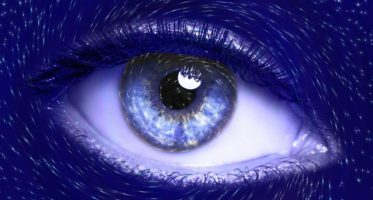If you’re left-handed, you know the world is not built for you. All cultures assign certain acts to the right hand such as shaking hands or swearing oaths, but how does this affect our consciousness?
Previous research has found that mixed handers (i.e., those that are more ambidextrous) were more likely than strong handers to update their beliefs. It was assumed that this was due to greater degrees of communication between the two cerebral hemispheres in mixed handers made connections between this model of updating beliefs and metacognitive processing.
Studies on twins have bolstered the belief that there may be a gene that distinguishes righties from lefties.
A preference for the left or the right hand might be traced back to asymmetry that allow us to develop specific brain patterns. “These results fundamentally change our understanding of the cause of hemispheric asymmetries,” conclude the authors. The team report about their study in the journal eLife.
Preference In The Womb
To date, it had been assumed that differences in gene activity of the right and left hemisphere might be responsible for a person’s handedness. A preference for moving the left or right hand develops in the womb from the eighth week of pregnancy, according to ultrasound scans carried out in the 1980s. From the 13th week of pregnancy, unborn children prefer to suck either their right or their left thumb.
Arm and hand movements are initiated via the motor cortex in the brain. It sends a corresponding signal to the spinal cord, which in turn translates the command into a motion. The motor cortex, however, is not connected to the spinal cord from the beginning. Even before the connection forms, precursors of handedness become apparent. This is why the researchers have assumed that the cause of right respective left preference must be rooted in the spinal cord rather than in the brain.
Handed Bias
Many traditional cultures, believing the right to be the good side (right in the sense of just and true), the left to be bad (in the sense of sinister), make everyone use only the right hand for certain public acts, especially food-handling and social exchanges such as giving and taking gifts, and reserve the left hand for ‘impure’, private acts.
The handedness explanation of the holdingside bias looks compelling, given the details it would seem to be able to explain or predict. If left-holders are mostly right-handers, and right-holders are mostly left-handers, it would explain the similar percentages of holder- and handedness-types, that is, that right-handedness and left-side holding are both the mode in the population. Handedness generally being weaker in left-handers, it also would predict a weaker right bias in left-handers. Finally, right-handers being the majority in every society, it would explain the ubiquity of the left bias.
The main problem for a handedness explanation is that the similar percentages of holder- and handedness-types don’t mean what they seem. Although the bias usually is weaker in left-handers, it’s usually a weaker left bias, not right bias. The majority of lefthanders therefore hold on the side that, instead of freeing their dominant hand, constrains it, just like the minority of righthanders who hold on the right side.
The Influence of Environmental Factors
Researchers who analysed the gene expression in the spinal cord during the eighth to twelfth week of pregnancy detected marked right-left differences in the eighth week — in precisely those spinal cord segments that control the movements of arms and legs. Another study had shown that unborn children carry out asymmetric hand movements just as early as that.
The researchers, moreover, traced the cause of asymmetric gene activity. Epigenetic factors appear to be at the root of it, reflecting environmental influences. Those influences might, for example, lead to enzymes bonding methyl groups to the DNA, which in turn would affect and minimise the reading of genes. As this occurs to a different extent in the left and the right spinal cord, there is a difference to the activity of genes on both sides.
The Affective Sources of Consciousness
Emotional feelings reflect the brain’s capacity to elaborate an affective form of consciousness, and the critical underlying brain functions have an evolutionary history that goes deeper into our ancestral past than anyone can presently know with assurance.
Affective processes are surely much older in brain evolution than our unique human capacity to ponder cognitively and dwell on our feelings. Although we can be certain of little in this emerging area of knowledge, we can be confident that affective consciousness has an evolutionary history that can only be deciphered by studying the psychological capacities of living animals. Feelings do not fossilize, except perhaps as cultural remnants of our own recent past.
Daniel Casasanto, a psychologist at the University of Chicago, studies the ways in which the world is mentally biased toward the right. His research has shown that politicians, for example, tend to use their non-dominant hand for negative gestures, and parents in recent decades have shown a preference for baby names typed on the right side of the keyboard.
Social psychologists have shown us that there’s a link between fluency [dexterity] and perceived goodness. We go through life interacting more fluently on the right with our dominant hand … If people conceptualize good and bad stuff on a left-right continuum in the way their language and culture tell them, everybody should think that right is good. Alternatively, if we have a mental metaphor based on asymmetries in the way we use our hands, then righties should think right is good, but lefties should think left is good–in spite of everything that language and culture are telling them.
Hemispheric asymmetry itself may lead to more decisive and controlled action, and perhaps a better ability to organize hierarchical processes, as in language, manufacture, and theory of mind. Those individuals who lack cerebral asymmetry [a.k.a. increased symmetry] may be more susceptible to spiritual awakening, are more creative and perhaps more spatially aware.
Article sources: sciencedirect.com; elsevier.com; awaken.com; theatlantic.com


















Social Links: